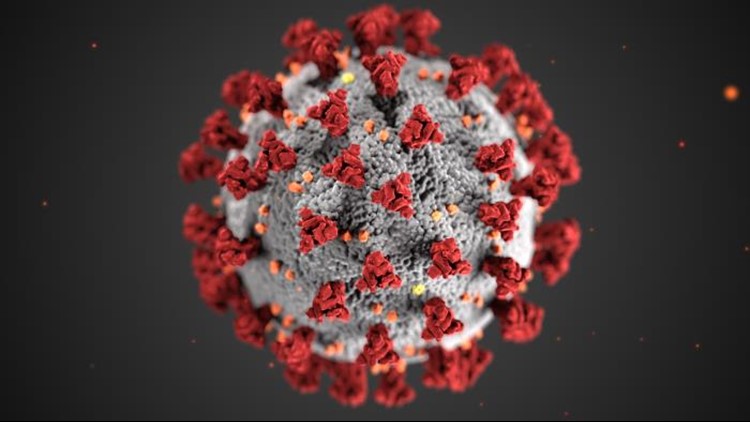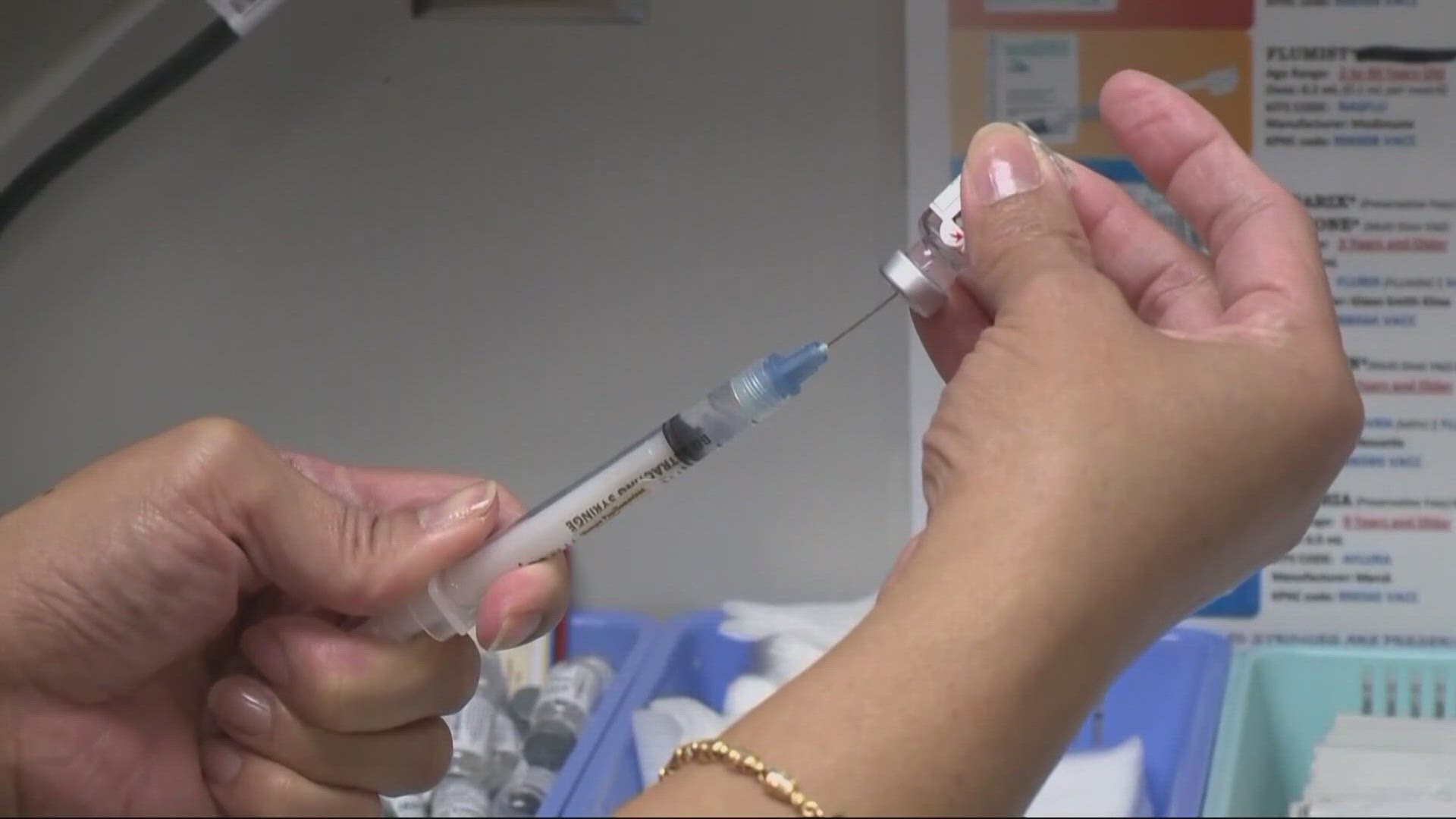PORTLAND, Ore. — Oregon is still on track to be hit with a record-breaking new wave of COVID-19 cases in the coming weeks due to the omicron variant, but a revised forecast from Oregon Health and Science University predicts a lower rate of hospitalizations than an initial estimate released last week.
OHSU’s first forecast predicted an omicron wave peak of 2,000 hospitalizations, eclipsing the delta wave peak of 1,187 hospitalizations that Oregon endured in early September. The new projection shows an omicron peak of roughly 1,250 hospitalizations, according to a Thursday news release from OHSU.
The revised estimate is based on new international data showing a lower rate of hospitalization than previously thought, according to a news release from OHSU, as well as updated data on Oregon’s booster shot delivery rates.
That second part is critical – the revised estimate assumes that many Oregonians will get vaccinated or boosted in the next few weeks and will take other actions to slow the spread of the virus. If that doesn’t happen, the omicron peak could still go as high as 1,700 hospitalizations, according to OHSU.
Gov. Kate Brown set a goal last week of delivering booster doses to 1 million Oregonians by the end of January, and the Oregon Health Authority announced yesterday that it will open four more mass-vaccination sites in addition to the six already operating throughout the state.
“Oregon has been good at flattening the curve from previous surges,” Dr. Peter Graven, director of OHSU’s Office of Advanced Analytics, said in a statement. “I expect Oregonians will respond by taking actions to reduce the spread of the virus, especially when they start to see infections accelerate among their friends and neighbors.”
The current projection shows a wave of infections accelerating by mid-January and reaching its peak in mid-February, according to OHSU, after which hospitalizations will decline because the virus will start to have more trouble finding new people who have not been recently infected or vaccinated.
Omicron tends to result in lower rates of severe illness and hospitalization among infected patients, but the variant is also far more contagious than prior versions of the virus, potentially resulting in higher hospitalization number than prior waves due to the sheer number of overall cases, Graven explained last week.
The new variant is also much better at evading the body’s defenses and infecting vaccinated people, Graven said, reducing vaccine protection by as much as half – although the vaccines still substantially reduce the risk of severe illness, and booster shots make the protection even stronger.
Other projections about omicron’s spread been sobering. KING 5 reported this week that the University of Washington’s Institute for Health Metrics and Evaluation predicted daily COVID-19 infections in Washington state could peak at about 38,700 in February, roughly six times higher than the delta peak (although the omicron prediction included unconfirmed cases in patients who don’t get tested).
The university also projected that three billion people are likely to be infected with the omicron variant worldwide in the coming months, with a peak of 35 million global infections per day in mid-January.



